History, Art & Culture: September 2025 Current Affairs | Current Affairs: Daily, Weekly & Monthly - CLAT PDF Download
National Maritime Heritage Complex at Lothal
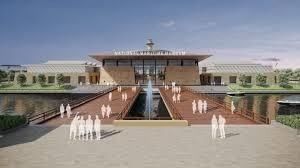
Why in News?
The Prime Minister has recently reviewed the construction progress of the National Maritime Heritage Complex (NMHC) located at Lothal in the Ahmedabad district of Gujarat.
Key Takeaways
- The NMHC aims to highlight India's rich maritime history spanning over 5,000 years.
- Lothal is recognized as the world's earliest dockyard dating back to the Indus Valley Civilization.
Additional Details
- Location: The complex is situated in Lothal, Ahmedabad district, Gujarat, specifically in the Bhal region near the Gulf of Khambhat.
- Developer: It is being developed by the Ministry of Ports, Shipping and Waterways, Government of India.
- Historical Significance of Lothal:
- Established around 2200 BCE as a prominent Harappan trade and craft center specializing in beads, gems, and ornaments.
- The name Lothal translates to "Mound of the Dead," akin to Mohenjo-daro.
- Excavated by S.R. Rao between 1955 and 1960, confirming its status as a major ancient port.
- The dockyard measured 222 x 37 meters and was linked to the old course of the Sabarmati river.
- Evidence of advanced water management systems, including lock gates and sluice systems, has been discovered.
- Trade connections once extended to Mesopotamia and other ancient civilizations.
- Nominated as a UNESCO World Heritage Site in 2014, making Lothal the only known port-town of the Indus Valley Civilization.
- Features of the Complex:
- Will include exhibition halls, a maritime park, an amphitheater, a museum, and educational research facilities.
- Focus on ancient trade routes, shipbuilding traditions, and navigation techniques.
- Expected to serve as a significant center for cultural tourism and heritage education.
The National Maritime Heritage Complex is anticipated to become a pivotal site for understanding and appreciating India's maritime history, fostering tourism, and promoting educational initiatives related to India's ancient maritime prowess.
Swami Vivekananda and Vedanta Philosophy
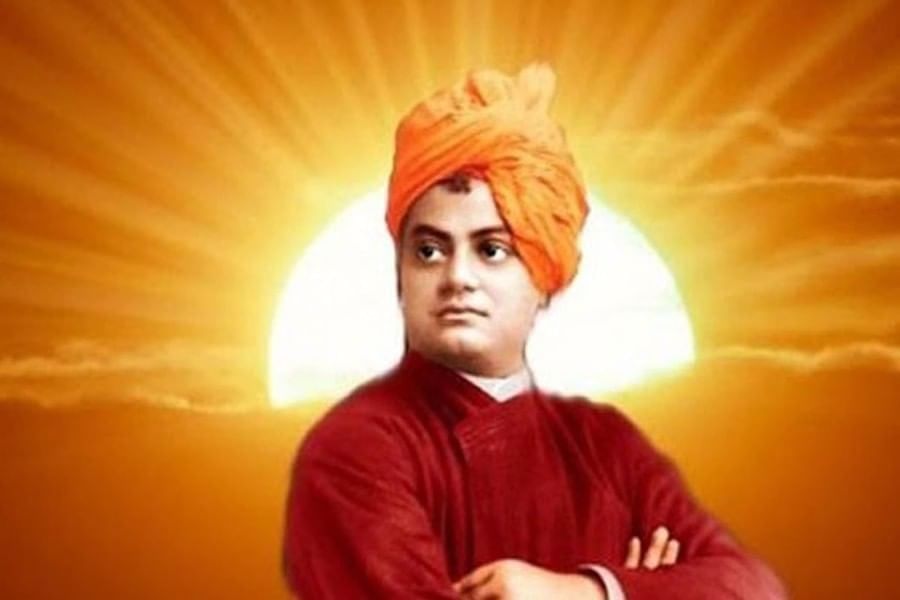
Why in News?
On the 132nd anniversary of his landmark address in Chicago in 1893, Swami Vivekananda is being commemorated for bringing Indian spirituality and the principles of Vedanta to the global stage, emphasizing a message of tolerance and unity among all people.
Key Takeaways
- Swami Vivekananda, born as Narendranath Datta in 1863 in Kolkata, was a prominent monk, reformer, and the founder of the Ramakrishna Mission in 1897.
- He gained international recognition through his address at the Parliament of Religions in Chicago, advocating for religious tolerance and universal brotherhood.
- His teachings focused on social service, education, and spiritual sovereignty as vital means for national regeneration.
- Vivekananda's legacy includes inspiring the establishment of Vedanta Societies worldwide and promoting yoga and meditation in the West, significantly influencing the Indian renaissance and freedom movement.
Additional Details
- What is Vedanta Philosophy? Vedanta is rooted in the Upanishads, particularly Advaita Vedanta, which emphasizes non-dualism and the oneness of existence.
- Oneness of Existence: The philosophy teaches that the universe is one absolute Brahman and that all souls are inherently divine.
- Religious Pluralism: Vedanta promotes the idea that all religions are valid paths to the same ultimate truth, fostering harmony rather than division.
- Self-Realization: The primary aim of life, according to Vedanta, is to realize and express one’s innate divinity.
- Karma Yoga: This principle emphasizes selfless service as a spiritual practice, encapsulated in the idea that “Jiva is Shiva,” meaning service to humanity is equivalent to service to God.
- Practical Vedanta: This approach seeks to apply spiritual wisdom in everyday life and social reform, bridging the gap between tradition and modernity.
In summary, Swami Vivekananda's contributions to Vedanta philosophy and his enduring legacy continue to inspire individuals and movements focused on spirituality, social service, and unity across diverse cultures and religions.
Decoding the Harappan Language: Govt Meet Planned
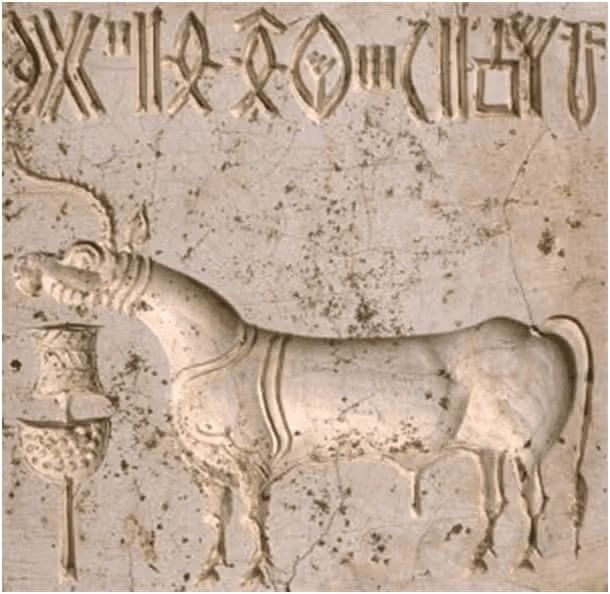
Why in News?
The Union Ministry of Culture will host a conference in New Delhi from September 11 to 13, 2023. This event will bring together archaeologists, scientists, and experts from various fields to discuss the undeciphered Harappan script, a mystery that has puzzled researchers since its discovery in the 1920s. The conference is organized by the Indira Gandhi National Centre for the Arts (IGNCA), which operates under the Culture Ministry.
Key Takeaways
- The Harappan script has remained undeciphered since its discovery.
- The Indus Valley Civilization flourished between 2600–1900 BCE across present-day Pakistan and northwest India.
- Scholarly debates continue regarding the nature, linguistic roots, and total number of signs in the script.
Additional Details
- Nature of the Inscriptions: Indus Valley inscriptions are found on seal stones, terracotta tablets, and occasionally on metal. They often feature a mix of pictograms along with animal or human motifs. Scholarly estimates of the number of signs in the script vary significantly.
- Debates on Linguistic Roots: The script's linguistic base is contentious, with some scholars connecting it to Brahmi, while others argue against this. This lack of consensus highlights the complexity of deciphering the script.
- Competing Theories: Various theories link the script to languages such as Sanskrit, Proto-Dravidian (Gondi), and Santali, reflecting the diverse scholarly perspectives.
The upcoming conference will showcase differing conclusions from various papers, further emphasizing the mysteries surrounding the undeciphered language of the Indus Valley Civilization. The search for a breakthrough in decoding the Harappan script is not merely an academic endeavor; it is also influenced by political and cultural narratives within India. For example, Tamil Nadu's Chief Minister M.K. Stalin has proposed a $1 million reward for anyone who can credibly decipher the script, which could have significant political implications.
India Adds 7 Natural Sites to UNESCO Tentative List
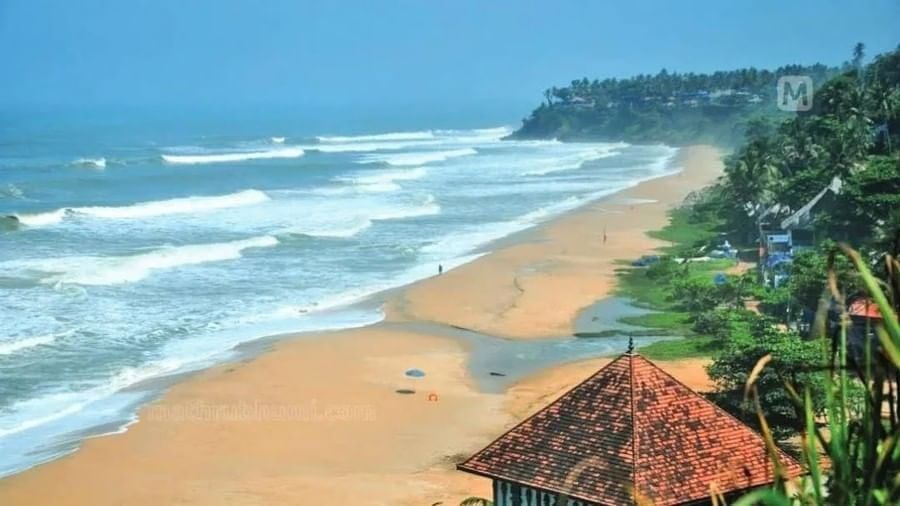
Why in News?
India has included seven natural sites in UNESCO’s Tentative List of World Heritage Sites, bringing its total to 69. This reflects India’s dedication to preserving its rich natural and cultural heritage.
What is UNESCO’s Tentative List of World Heritage Sites?
The Tentative List is the initial step towards securing a UNESCO World Heritage nomination. Countries identify sites of exceptional universal value and submit them to UNESCO for consideration. Only sites on this list can be nominated for full inscription. In India, the Archaeological Survey of India (ASI) is responsible for compiling and submitting these nominations.
India’s Newly Added Sites
- Deccan Traps at Panchgani and Mahabaleshwar, Maharashtra. These sites are known for their well-preserved lava flows and are part of the Deccan Traps, located within the Koyna Wildlife Sanctuary, which is already a UNESCO World Heritage Site.
- Geological Heritage of St. Mary’s Island Cluster, Karnataka. This island cluster is famous for its unique columnar basaltic rock formations dating back to the Late Cretaceous period, around 101 to 66 million years ago.
- Meghalayan Age Caves, Meghalaya. The cave systems in Meghalaya, especially the Mawmluh Cave, are significant as they serve as the global reference point for the Meghalayan Age in the Holocene Epoch, reflecting important climate and geological changes over the last 11,000 years.
- Naga Hill Ophiolite, Nagaland. This site offers a rare glimpse of ophiolite rocks, representing oceanic crust uplifted onto continental plates, providing valuable insights into tectonic processes and mid-ocean ridge dynamics.
- Erra Matti Dibbalu (Red Sand Hills), Andhra Pradesh. These red sand formations near Visakhapatnam exhibit unique paleo-climatic and coastal geomorphological features, revealing insights into Earth’s climatic history and evolution. Erra Matti Dibbalu was designated a GeoHeritage Monument by the Geological Survey of India in 2016.
- Natural Heritage of Tirumala Hills, Andhra Pradesh. This site features the Eparchaean Unconformity and the Silathoranam (Natural Arch), holding significant geological importance and representing over 1.5 billion years of Earth’s history. The site is part of the Seshachalam Biosphere Reserve and Venkateswara National Park.
- Varkala Cliffs, Kerala. The cliffs along Kerala’s coastline expose the Warkalli Formation of Mio-Pliocene age, along with natural springs and distinctive erosional landforms, offering both scientific and touristic value.
World Heritage Sites
- World Heritage Sites (WHS) are locations of exceptional universal value, recognized for their importance and protected for future generations. These sites can be cultural, natural, or mixed, and are safeguarded under the 1972 World Heritage Convention, which was adopted by UNESCO member countries.
- The UNESCO World Heritage Committee oversees the maintenance of this list through the World Heritage Programme. India ratified the Convention in 1977.
- As of September 2025, India boasts 44 World Heritage Sites recognized by UNESCO, with the Maratha Military Landscapes of India being the latest addition as the 44th site.
100 Years of the Self-Respect Movement in Tamil Nadu
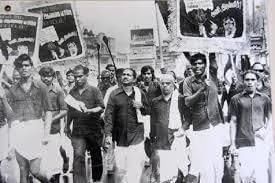
Why in News?
This year marks the centenary of the Self-Respect Movement in Tamil Nadu, a transformative socio-political reform movement initiated to challenge societal inequalities.
Key Takeaways
- The Self-Respect Movement was founded in 1925 by E.V. Ramasamy Periyar.
- It aimed to dismantle Brahminical dominance, caste hierarchy, and patriarchal norms.
- The movement advocated for women's rights and rational social practices.
Additional Details
- Overview: The Self-Respect Movement was established in 1925 by E.V. Ramasamy Periyar in Tamil Nadu following his departure from the Indian National Congress.
- Aim: Its mission was to challenge and eradicate Brahminical dominance, caste hierarchies, and the patriarchy, promoting a rational and egalitarian society.
- Methods:
- Promotion of Self-Respect Marriages that did not involve priests or caste rituals.
- Advocacy for women’s rights including widow remarriage, divorce, property rights, and inter-caste marriage.
- Utilization of the Kudi Arasu journal to disseminate progressive ideas and reformist propaganda.
- Significance: The movement laid the groundwork for the Dravidian movement in Tamil Nadu, prioritizing social reform ahead of political independence while providing marginalized communities and women a platform for dignity and equality.
E.V. Ramasamy Periyar, often referred to as Thanthai Periyar (Father Periyar), was a pivotal social reformer and political thinker who advocated for rationalism, atheism, and the eradication of caste. His legacy continues to influence Tamil Nadu’s social justice policies and movements.
Who was Ishwar Chandra Vidyasagar (1820–1891)?
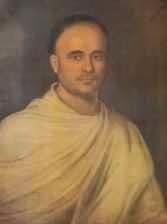
Why in News?
On his birth anniversary, celebrated on 26 September, the Union Home Minister paid tribute to Ishwar Chandra Vidyasagar, a prominent Bengali social reformer known for his significant contributions to education and social reform in India.
Key Takeaways
- Born on 26 September 1820 in Birsingha, West Bengal.
- Died on 29 July 1891 in Kolkata.
- Conferred the title "Vidyasagar," meaning "Ocean of Knowledge."
- Key figure in educational reform and women's rights in 19th century India.
Additional Details
- Educational Reforms:
- Modernized the Bengali alphabet and prose.
- Authored "Borno Porichoy.", a foundational primer for teaching Bengali script.
- Established teacher training institutions and advocated for non-Brahmin access to Sanskrit College.
- Women’s Rights and Social Reform:
- A leading advocate for Hindu widow remarriage, instrumental in the passage of the Hindu Widows’ Remarriage Act, 1856.
- Strongly opposed child marriage and polygamy.
- Promoted women's education, serving as secretary of the Hindu Female School, which later became known as the Bethune School.
- Philanthropy:
- Founded schools for girls and adults in Santhal Parganas (Jharkhand).
- Established a free homeopathy clinic for the underprivileged.
- Language and Literature:
- Recognized as the Father of Modern Bengali Prose.
- Made Bengali prose accessible and engaging for the common people.
Vidysagar's legacy continues to influence modern education and social structures in India, showcasing the importance of reformative actions in society.
Who was Rani Rashmoni (1793-1861)?
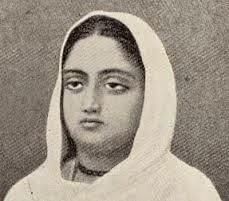
Why in News?
The Prime Minister has paid tribute to Rani Rashmoni on her birth anniversary on 28th September.
Key Takeaways
- Rani Rashmoni was a prominent zamindar, businesswoman, philanthropist, and social reformer from 19th-century Bengal.
- She took charge of her estate and business after her husband's death, a rarity for women at that time.
- She is revered as "Lokmata" (Mother of the People) for her contributions to society and courage.
Additional Details
- Birth: Rani Rashmoni was born on 28 September 1793 in Halisahar, Bengal.
- Marriage: She married at the young age of 11 to Raja Raj Chandra Das, a wealthy zamindar of Janbazar, Kolkata.
- Leadership: After her husband’s death in 1836, she assumed control of their estate and business.
- Reputation: Known as "Lokmata," she earned this title due to her effective administration and commitment to social causes.
- Patronage: She built the Dakshineswar Kali Temple between 1847 and 1855 and appointed Sri Ramakrishna Paramahamsa as chief priest despite facing caste opposition.
- Social Reforms: Rani Rashmoni actively opposed polygamy and child marriage, supported widow remarriage, and submitted a draft bill against polygamy to the British authorities.
- Public Welfare & Infrastructure: She constructed major ghats on the Ganga, including Babughat, Ahiritola Ghat, and Nimtala Ghat, and funded essential infrastructure like roads and reservoirs.
- Resistance to British Rule: Rani Rashmoni protested fishing taxes on Hooghly fishermen by blocking river traffic, which ultimately led to the abolition of the tax. She also defied British restrictions on Durga Puja processions.
- Support for Education & Culture: She contributed to the Imperial Library (now National Library of India) and Hindu College (now Presidency University), and established schools for women and marginalized groups.
Rani Rashmoni's legacy as a pioneering figure in social reform and her contributions to education and infrastructure continue to inspire many in contemporary society.
|
1360 docs|798 tests
|
FAQs on History, Art & Culture: September 2025 Current Affairs - Current Affairs: Daily, Weekly & Monthly - CLAT
| 1. What is the significance of the National Maritime Heritage Complex at Lothal? |  |
| 2. How did Swami Vivekananda contribute to the spread of Vedanta philosophy? |  |
| 3. What are the challenges faced in decoding the Harappan language? |  |
| 4. What are the newly added natural sites in India's UNESCO Tentative List? |  |
| 5. Who was Rani Rashmoni, and what was her contribution to Indian history? |  |





















